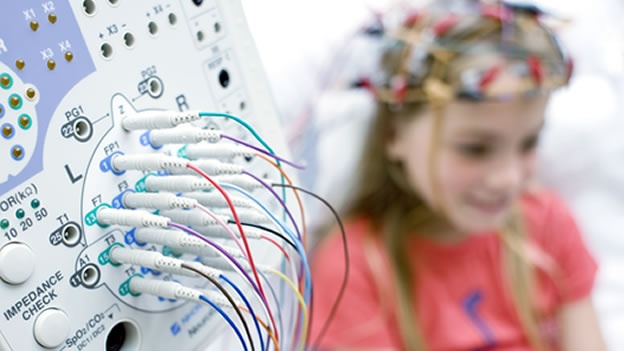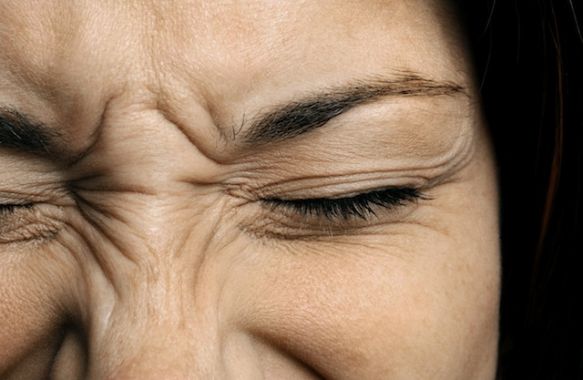Blog
- Holiday Weight Management Tips From a Psychology Professor
- By Jason von Stietz
- December 22, 2014
-

Getty Images For many, the holiday season is a time of inner conflict, as many struggle with whether to indulge in a piece of pumpkin and watch one’s waistline expand or to go without and avoid putting on those extra pounds. Unfortunately, when dieting attempts are too restrictive they often result in more added weight down the road. Does the field of psychology offer insight into how to survive the holiday season? A recent article in MedicalXpress discusses weight management tips from a professor of psychology:
You can have your cake – and pumpkin pie – and eat it too, says Charlotte Markey, a professor of psychology at Rutgers University-Camden.
"Once people say that they can't have thatpumpkin pie, they will only want it more, and are still likely to eat it and to eat more of it," explains Markey. "We should enjoy the holiday rituals and the foods that go with those rituals. It's a cliché, but it works: if you want to get through the long haul of the holidays, don't try to cut out foods altogether, but keep them in balance or moderation."
Such practical advice is emblematic of the refreshingly different approach to weight management that Markey offers in her forthcoming book Smart People Don't Diet, due out on Dec. 30 from Da Capo Lifelong Books. Based on more than a century of research by scientists, doctors, nutritionists, and psychologists, the book addresses the underlying causes of weight gain and offers proven strategies for healthful, sustainable weight management. The book will also be accompanied by the SmartenFit mobile app, which allows users to keep tabs on food intake, set nutrition and health goals, and swap out foods for healthier alternatives.
Rather than relying on gimmicks and quick fixes, Markey offers a reasonable, accessible guide for adopting a healthy lifestyle as a long-term endeavor.
"From the very beginning of the book, I say that you have to be committed to healthier living forever," says Markey, a resident of Swarthmore, Pa. "This isn't about losing five pounds this week for the wedding that you are going to on the weekend. Sure, you can try that, but research shows that you are just going to gain them back next week. This is about changing your life."
According to Markey, aside from being "a miserable experience," dieting rarely leads to the desired goal of losing weight. On the contrary, studies show that dieters often gain weight because most diets' intensity, restrictions, and short durations are ill-equipped to produce long-term results.
"The track record for dieting is terrible," says Markey, who teaches a psychology of eating course at Rutgers–Camden. "You may lose 20 pounds in the first month, but a year later, you are right back to where you started or may have even gained a few pounds."
Throughout the book, Markey offers simple strategies for altering bad eating habits. She explains that most people are habitual eaters, tending to crave the same foods time and again. Consequently, instead of "going cold turkey," she recommends substituting lower-calorie and lower-fat versions of the same beloved foods, thereby establishing better habits that can be easily maintained.
"It's not about making drastic changes," says Markey. "Instead of sitting down with a tub of ice cream with 500 calories, eat a healthier variety and a little less of it. Just by eliminating a couple hundred calories from that dessert can result in a 20-pound weight loss over the course of a year. If you are looking to lose 10 or 20 pounds, then you only need to switch out a few foods and give it enough time to make a difference."
In Smart People Don't Diet, Markey also addresses the psychological and physical aspects of weight management, dedicating entire chapters to research on body image and exercise. As Markey explains, there is a cyclical nature to the way that mental and physical health feed off of one another. She affirms that a major aspect of having a positive body image is learning to be "a little bit more accepting and gentle with ourselves."
"None of us is perfect," says the Rutgers–Camden researcher. "You have to move away from the mindset that says you have to lose 40 pounds in order to be acceptable to yourself. Feel accomplished if you lose a couple pounds; that's a great place to start."
Markey notes that, although some strategies in the book might sound like "commonsense," if more people were aware of these sensible solutions then there wouldn't be a nationwide obesity epidemic and consumers wouldn't be ready to latch on to the latest weight-loss fads. Moreover, while the book isn't as prescriptive as other weight-loss guides, she adds, any plan that is too restrictive isn't a recipe for long-term success.
"A plan might tell you to eat only an apple and two pieces of bread," she says. "However, if you don't enjoy eating only that, you aren't going to do it for very long. You have to get away from the fads and start setting realistic goals."
Simply put, Markey says, get to know yourself and figure out a plan that works for you.
"As I like to say, 'We are all works in progress,'" says Markey. "It's not about dieting for a week. It's about eating smart for the rest of your life."
Markey received her doctorate in health and developmental psychology, with a focus on eating behaviors and body image, from the University of California–Riverside. She has been conducting research on eating, dieting, body image, and obesity risk for more than 15 years. She has also published more than 50 book chapters and journal articles in peer-reviewed journals, and has presented hundreds of presentations at universities throughout the world.
Markey also pens a blog and writes regularly for ScienceofRelationships.com, focusing primarily on how romantic partners are relevant to individuals' eating behaviors, body image, and health.
In addition, Markey has been involved in community efforts to educate parents and children about healthy eating, body image, and weight management. A portion of the sales from Smart People Don't Diet will be donated to The Food Trust to fund programs that facilitate education about healthy eating for children.
Read the original article Here
- Comments (2)
- Brain Connectivity Related to Epilepsy
- By Jason von Stietz
- December 19, 2014
-

Getty Images Recent findings of researchers at University of Exeter could refine diagnostic procedures for a common form of epilepsy. Researchers investigated the use of mathematical modeling to assess an individual’s EEG for susceptibility to idiopathic generalized epilepsy (IGE) and found brain connectivity to be an important factor. The study was discussed in a recent article of NeuroScientistNews:
Current diagnosis practices typically observe electrical activities associated with seizures in a clinical environment.
The ground-breaking research has revealed differences in the way that distant regions of the brain connect with each other and how these differences may lead to the generation of seizures in people with IGE.
By using computer algorithms and mathematical models, the research team, led by Professor John Terry, was able to develop systems to analyse EEG recordings gathered while the patient is at rest, and reveal subtle differences in dynamic network properties that enhance susceptibility to seizures.
Professor Terry said: "Our research offers the fascinating possibility of a revolution in diagnosis for people with epilepsy.
"It would move us from diagnosis based on a qualitative assessment of easily observable features, to one based on quantitative features extracted from routine clinical recordings.
"Not only would this remove risk to people with epilepsy, but also greatly speed up the process, since only a few minutes of resting state data would need to be collected in each case."
The pivotal research has been published in a recent series of papers, the most recent of which has been published online in the scientific journal Frontiers in Neurology.
In their first study, EEG recordings were used to build a picture of how different regions of the brain were connected, based upon the level of synchrony between them. The collaborative team of researchers from Exeter and Kings College, London, then used a suite of mathematical tools to characterise these large-scale resting brain networks, observing that in people with IGE these networks were relatively over-connected, in contrast to healthy controls.
They further observed a similar finding in first-degree relatives of this cohort of people with IGE; an intriguing finding which suggests that brain network alterations are an endophenotype of the condition - an inherited and necessary, but not sufficient, condition for epilepsy to occur.
In a second study the team sought to understand how these alterations in large-scale brain networks could heighten susceptibility to recurrent seizures and thus the condition epilepsy. The study revealed two intriguing findings - firstly, the level of communication between regions that would lead to their activity becoming synchronised was lower in the brain networks of people with IGE, suggesting a possible mechanism of seizure initiation; and further that altering the activity in specific left frontal brain regions of the computational model could more easily lead to synchronous activity throughout the whole network.
In their most recent study, researchers have introduced the concept of "Brain Network Ictogenecity" (or BNI) as a probabilistic measure for a given network to generate seizures. They found that the brain networks of people with IGE had a high BNI, whereas the brain networks of healthy controls had a low BNI.
Professor Terry said: "Our most recent analyses have revealed that the average connectedness of each brain region is key to creating an environment where seizures can thrive.
This feature appropriately discriminates between cohorts of people with idiopathic generalized epilepsies and healthy control subjects. The next critical state of our research is to validate in a prospective study the predictive power of these findings."
Read the original article Here
- Comments (0)
- Pain Pathway Utilized in New Approach to Pain Management
- By Jason von Stietz
- December 11, 2014
-

Getty Images Researchers have discovered a promising new approach to pain management. Daniela Salvemini, Ph.D., a researcher from Saint Louis University (SLU), along with researchers from the National Institutes of Health (NIH) and other institutions have investigated an underutilized pain pathway in animal models of chronic neuropathic pain. The findings were discussed in a recent article of MedicalXpress:
The scientific efforts led by Salvemini, who is professor of pharmacological and physiological sciences at SLU, demonstrated that turning on a receptor in the brain and spinal cord counteracts chronic nerve pain in male and female rodents. Activating the A3 receptor - either by its native chemical stimulator, the small molecule adenosine, or by powerful synthetic small molecule drugs invented at the NIH - prevents or reverses pain that develops slowly from nerve damage without causing analgesic tolerance or intrinsic reward (unlike opioids).
An Unmet Medical Need
Pain is an enormous problem. As an unmet medical need, pain causes suffering and comes with a multi-billion dollar societal cost. Current treatments are problematic because they cause intolerable side effects, diminish quality of life and do not sufficiently quell pain.
The most successful pharmacological approaches for the treatment of chronic pain rely on certain "pathways": circuits involving opioid, adrenergic, and calcium channels.
For the past decade, scientists have tried to take advantage of these known pathways - the series of interactions between molecular-level components that lead to pain. While adenosine had shown potential for pain-killing in humans, researchers had not yet successfully leveraged this particular pain pathway because the targeted receptors engaged many side effects.
A Key to Pain Relief
In this research, Salvemini and colleagues have demonstrated that activation of the A3 adenosine receptor subtype is key in mediating the pain relieving effects of adenosine.
"It has long been appreciated that harnessing the potent pain-killing effects of adenosine could provide a breakthrough step towards an effective treatment forchronic pain," Salvemini said. "Our findings suggest that this goal may be achieved by focusing future work on the A3AR pathway, in particular, as its activation provides robust pain reduction across several types of pain."
Researchers are excited to note that A3AR agonists are already in advanced clinical trials as anti-inflammatory and anticancer agents and show good safety profiles.
"These studies suggest that A3AR activation by highly selective small molecular weight A3AR agonists such as MRS5698 activates a pain-reducing pathway supporting the idea that we could develop A3AR agonists as possible new therapeutics to treat chronic pain," Salvemini said.
Read the original article Here
- Comments (0)
- Do People with Autism See Faces Differently?
- By Jason von Stietz
- December 5, 2014
-
.jpeg)
People with autism have difficulty socializing and connecting with others? Recognizing facial expressions is a key component to social activity. Is it possible that people with autism evaluate facial expressions differently? Researchers investigated the capacity for people with autism to recognize facial expressions in photographs of people as well as in pictures of synthetic faces. NeuroScientistNews discussed the study in a recent article:
The way people with autism spectrum disorder (ASD) gather information - not the judgement process itself - might explain why they gain different perceptions from peoples' faces, according to a new study from Hôpital Rivière-des-Prairies and the University of Montreal. "The evaluation of an individual's face is a rapid process that influences our future relationship with the individual," said Baudouin Forgeot d'Arc, lead author of the study. "By studying these judgments, we wanted to better understand how people with ASD use facial features as cues. Do they need more cues to be able to make the same judgment?"
The study was conducted in collaboration with a team from the Hôpital Robert-Debré in Paris, who recruited 71 individuals, including a control group (n=38) and an ASD group (n=33), without intellectual disabilities. The group was divided into aged-matched subgroups: children (mean age 10 years) and adults (mean age 33 years) The researchers presented 36 pairs of photographic and synthetic images to the participants, and evaluated their social judgment by asking them to indicate which emotionally neutral faces appeared "kind" to them.
When photographic images of neutral faces were presented, the judgment of ASD participants was mixed compared to participants in the control group - the choices of the ASD participants were not predictable from one subject to another. However, the researchers found no difference between the groups when participants were presented with synthetic images, which were nevertheless created based on the characteristics of the photographic images previously shown. Moreover, when the synthetic image pairs contained less useful judgment clues (less pronounced facial features), the results for the two groups were influenced in the same way by this difficulty.
The identical results of the two groups when they viewed synthetic images suggest that it is not the judgment process itself that is different: judging whether a person seems "kinder" than another can be accomplished similarly in participants with or without ASD. However, the differences observed when they viewed photographic images suggest that the way they gather information about people's faces is critical.
"We now want to understand how the gathering of cues underpinning these judgments is different between people with or without ASD depending on whether they are viewing synthetic or photographic images. Ultimately, a better understanding of how people with ASD perceive and evaluate the social environment will allow us to better interact with them," said Forgeot d'Arc.
Read the original article Here
- Comments (0)


 Subscribe to our Feed via RSS
Subscribe to our Feed via RSS